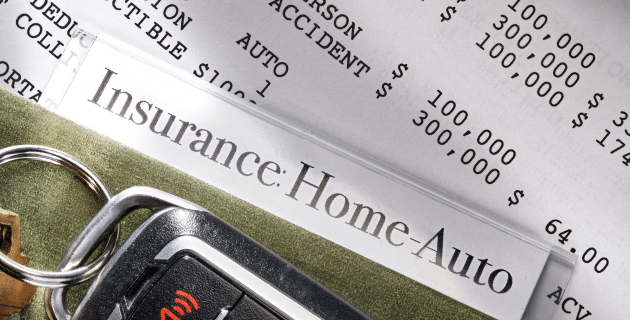
by California Casualty | Auto Insurance Info, Safety, Travel |
Some days it seems we’re practically living in our cars. Having the right things on hand can make our lives that much easier.
As you’re going from soccer practice to dance and back again, make sure you have the kid-friendly “must-haves” in your vehicle. In honor of Child Passenger Safety Week, we’ve also included some important items to keep everyone safe.
Essentials
Stock the basic travel items to keep everyone clean and comfortable.
- Wipes: These include wet wipes to clean hands and faces as well as disinfecting wipes for surfaces such as car seats. Up your game with stain remover wipes for those “oops” moments.
- Tissues: Travel packs are easy to store. Not only are they good for the sniffles, but they can also double as napkins after eating, or toilet paper if you’re in a bathroom that has run out.
- A towel: Dry off, clean off, or use to cover a hot seat. Towels can even double as a blanket or a napkin in a pinch.
- Scissors: These are helpful in case you need to cut a seatbelt in an emergency. In non-emergency situations, use them to cut open items that won’t easily tear.
Pro Tip: Use a laundry basket for the things going from the car into the house and back again. It’s especially useful for sports equipment.
Clothing
Keep some extra things for everyone in your family.
- Ponchos and/or umbrellas: You’ll want these for when you’re caught in the rain. You can find inexpensive disposable ponchos that do the trick.
- Extra pair of clothes: Include a change of clothes with underwear, and a plastic bag for dirty or wet things.
- Flip flops: It’s easier storing these than shoes for those times when your child splashes in muddy puddles. They’re more forgiving in size and you buy them on clearance.
- Coats, sweatshirts, and blankets: These are great when the air conditioning is blasting, or the weather turns colder unexpectedly.
Snacks and Water
Sometimes plans change, or things take longer than you expected. This way, you’ll avoid the question, “can we stop somewhere for dinner?”
- Snacks: Stock child-friendly snacks and update even nonperishable ones regularly.
- Self-serve containers: Invest in spill-proof cups and containers that enable toddlers and young children to serve themselves.
- Water: Choose reusable bottles, filled with fresh water to keep everyone hydrated. Water is also helpful when someone has sticky hands or sandy/dirty feet.
- Trash bag: You want a place where the kids can throw their trash. Disposable plastic or paper bags are good options. Make sure to empty them often.
Entertainment
Keep them occupied with their favorite activities so that you can stay focused on the road.
- Shoe box of toys: Let them decorate a shoe box and choose their favorite toys for the car. Include crayons and add some coloring books to your bag of books, below.
- Reading: Pack a bag of books for every age level. Consider audio books for longer trips.
- Power converter: Charge everything from phones to kids’ tablets to portable DVD players.
- Restaurant backpack: Stopping to eat? Fill a backpack with toys and activities for kids to use at the restaurant.
Safety
We recognize Child Passenger Safety Week each September. It’s a reminder to keep safety in mind when we’re on the road.
- LifeVac anti-choking device: Enjoying snacks in the car? This rescue suction device can save a life in a choking emergency.
- Safewise seat alarm: This device detects when you open a back door before starting the engine. It sounds a chime, then issues escalating reminders so that you won’t accidentally leave a child behind in a hot car.
- First aid kit: From band aids to antibiotic ointments, chances are you’re going to have to take care of minor injuries on the road. Make sure your first aid kit is fully stocked with the items you need. Include a first aid manual for those situations where you’re not exactly sure what to do.
- Emergency roadside kit: Make sure you’re fully prepared in case you get stuck or stranded. Flares, flashlights, and jumper cables are good things to have in your emergency car kit.
Teach your children safety in and around vehicles for added protection. Finally, protect your car with the right insurance. It will give you peace of mind as you take care of your most precious cargo—your children. Safe travels.
This article is furnished by California Casualty, providing auto and home insurance to educators, law enforcement officers, firefighters, and nurses. Get a quote at 1.866.704.8614.

by California Casualty | Auto Insurance Info, Finances, Homeowners Insurance Info |
Insurance policies may seem like they’re written in another language. Yet it’s important to understand the terms so you can get the most out of your coverage. Here’s a quick tutorial on deductibles and what they mean for your auto and home insurance.
What is a deductible?
Simply put, a deductible is the amount of money that you pay out-of-pocket before insurance kicks in. Generally, your insurer deducts the deductible amount from the payment that they make on your claim. You can find the deductible listed on the declarations page, which is the front page of your policy.
Example: If the cost of a repair is $1,500 and your deductible is $500, insurance will cover $1,000.
Unlike health insurance deductibles, you do not have to reach an annual amount in an auto or home policy before insurance will pay. Each time you file a claim, there is a deductible (if it applies). One exception is the state of Florida where hurricane deductibles are once per season.
High vs. Low Deductibles
You select your deductible from a range of choices provided by your insurer. If you choose a lower deductible, that means your insurer will need to cover more in the event of a claim, which will raise the cost of your policy. If you choose a higher deductible, you’re willing to cover more of the cost in a claim, and that will lower your premium.
Lower deductible = Higher insurance premium
Higher deductible = Lower insurance premium
It’s important to note that you will have to pay the deductible if a loss occurs in a car accident, even if you think the other driver is at fault.
You may think twice about filing a claim for a damage amount that is close to your deductible. For example, if your deductible is $1,000 and repairs are $1,250, it may not be worth it. You’d be responsible for the bulk of the repairs, and by filing a claim, your rates may go up when you renew. See our blog about when you need to file a claim and when you don’t.
There are different types of coverage available to you for your vehicle. Some may be mandated by your state or your lender, and others are optional. Not all coverages carry a deductible.
The following coverages include a deductible, and you may choose a different deductible amount for each one:
- Collision: This coverage kicks in when you collide with another car or object.
- Comprehensive: This coverage is for damage from other causes such as hitting a deer or having a tree fall on your car.
- Uninsured motorist property damage (UMPD): This coverage is for property damage from accidents with another driver who is uninsured and at fault. UMPD may or may not have a deductible; it depends on the state and the type of loss. (Uninsured motorist coverage, which is different than UMPD, does not have a deductible.)
- Personal injury protection (PIP): This coverage pays for medical expenses regardless of who is at fault.
Pro Tip: Being able to set a deductible for each type of coverage allows you to assess the likelihood of your needing that coverage. For example, if you live in the country and might be more likely to encounter a deer than another car, you can lower the deductible for comprehensive and raise the deductible for collision.
There is auto coverage that does not carry a deductible, and that’s liability coverage. With liability coverage:
- If you are at fault: You hit another car and cause property damage and/or driver injuries. Your liability covers the damage to the other driver and his/her car without requiring a deductible. However, your own collision policy pays for damage to your car, which would come with a deductible.
- If someone else is at fault: Another driver hits your car and/or injures you. Their insurance will pay for damages and medical expenses. There are no deductibles.
Your insurer can provide quotes for different levels of deductibles and work with you to determine the best coverage for your budget.
Homeowner’s Policies and Deductibles
Whether you’re buying a new home, or you’ve owned yours for years, your homeowner’s policy protects your investment. Costs vary by location, age of home, construction type, number of bathrooms, and many other factors.
With homeowner’s insurance, there are generally three choices for deductibles:
- Flat deductibles: You would choose a fixed dollar amount, such as $1,000. That is the amount you would pay out-of-pocket before insurance kicks in.
- Percentage deductibles: You would choose percentage of your Coverage A limit. If your policy covers your home at $300,000, and you choose a 2% deductible, you would be responsible for 2% of $300,000 or $6,000.
- Peril-specific deductible option: You could have a flat deductible amount and then carry a different one specifically for wind/hail losses.
There are coverages under your home insurance that do not carry a deductible. These include Scheduled Personal Property (SPP) Coverage, Coverage E: Personal Liability, and Coverage F: Medical Payments to Others.
- Scheduled personal property (SPP) Coverage is for items that have higher values above your personal property coverage limits. This includes heirlooms, watches, jewelry, instruments, furs, or anything about which you are especially concerned such as a special guitar. (Musical instruments for example do not have a contractual limit but you will want to schedule an instrument that is special to you.) SPP offers much broader coverage for your precious items – if you lose a set of earrings, they are covered; if a diamond falls out of a ring, or if a guitar falls off a shelf and gets stepped on, they’re covered. There is no deductible if the covered items are stolen, lost, or damaged. Insurance pays the lowest of the four options: repair, replace, actual cash value or the amount of insurance.
- Personal Liability protects you if a claim is made or a suit brought against you for bodily injury or property damage caused by an occurrence to which coverage applies. These are expenses paid to third parties for their injuries and damages. Liability covers you at your place or anywhere in the world. If you are found liable, the policy will pay up to its limit of liability for damages for which an insured is legally liable. This can include medical expenses, lost wages, pain and suffering, and permanent scarring. The policy also provides a defense in court, if needed, for the policyholder. This is at the insurance company’s own expense.
Insurance may seem complicated, but it doesn’t have to be. Your agent can answer any questions you may have. Contact your insurer to find out more about protecting your most valuable possessions.
This article is furnished by California Casualty, providing auto and home insurance to educators, law enforcement officers, firefighters, and nurses. Get a quote at 1.866.704.8614 or www.calcas.com.

by California Casualty | Auto Insurance Info, Safety |
If you haven’t thought about crossing guards, school buses, and kids walking to school for a while, it’s time to refresh your memory. You’ll want to review important safety tips as everyone heads back to class.
From school zones to buses, bikes, and more, this guide shares the basics about back-to-school traffic safety. Read on to find out what you need to know.
Learn where the school zones are.
A school zone is an area on the street near a school where students typically travel on foot or by bike, skateboard, etc. It is typically located one or two blocks around the school.
- Look for signs and road markings that indicate a school zone.
- Prepare to slow down. School zones have reduced speed limits during certain hours like drop-off and dismissal.
- Watch for children, who may cross without looking. Remember that not all students use crosswalks, and not all crosswalks have crossing guards.
- Put your phone away. Texting in a school zone carries a big fine.
Be aware of the time of day.
You may drive past the school every day, but you must be extra vigilant when school is in session.
- Pay attention to when your local schools start and end the day. Know the times that students typically arrive and leave. Remember that schools sometimes have early dismissal.
- During these times, be careful backing out of driveways and traveling through the neighborhood near schools, playgrounds, and parks.
- You may even decide to take a different route to avoid the school at busy times.
Navigate school parking lots carefully.
Rushed, distracted parents and children who may not understand traffic rules create safety hazards in school parking lots. Learn and follow your school’s rules for dropping off, picking up and parking.
- Go slowly past parked cars. Children can appear out of nowhere.
- Don’t make U-turns and don’t pass a vehicle unloading passengers. These are unpredictable moves that other cars and pedestrians will not expect.
- Don’t double park as you will block the view, and ability to move, for others.
- Don’t honk your horn. You could startle those around you.
- Avoid the emergency lanes or handicap spots unless you are authorized to use them.
Know the rules for sharing the road with school buses.
It’s likely you’ll be sharing the road with school buses. These larger vehicles have their own special rules. Check your state’s laws for specifics.
- Keep a safe distance behind school buses.
- Avoid cutting in front of school buses even if your car can fit. Never pass a stopped school bus in either direction.
- Watch for yellow flashing lights that signal a bus is about to stop. By the time the bus flashes red lights, you should be stopped and that’s true for both directions.
- Be aware of a bus driver’s blind spots. They are located around the front, sides, and back of the vehicle.
Know the rules for sharing the road with bicycles.
You will likely encounter kids on bicycles as you drive. Be aware that they may or may not understand the traffic rules.
- Learn biking hand signals so you will know what a cyclist is communicating. Know that some cyclists will turn without signaling, too.
- Watch for bicycles that unexpectedly come from driveways and between parked cars.
- Allow plenty of room and slow down when you are passing a bicycle.
- Check your mirrors and blind spots before turning. Stay out of bike lanes.
- After you park your car, check your side mirrors before you open your door. That way, you hopefully won’t knock into a bicyclist with your door.
Other Safety Tips
You can be proactive to keep everyone safe during back-to-school traffic and year-round. Here are some additional tips.
- Expect the unexpected. Children are unpredictable.
- Teach your children about safety around cars.
- Teach your children how to share the road as a bicyclist and on their skateboards.
- Consider carpooling to reduce the traffic in the school parking lot.
- Give yourself extra time. When you’re not in a rush, it’s easier to make clear headed decisions.
Finally, keep your car insurance up to date for added peace of mind. After all, you’re carrying precious cargo.
This article is furnished by California Casualty, providing auto and home insurance to educators, law enforcement officers, firefighters, and nurses. Get a quote at 1.866.704.8614 or www.calcas.com.

by California Casualty | Auto Insurance Info, Finances, Homeowners Insurance Info |
Maybe you got married—or divorced. Perhaps a nanny moved in, or your son or daughter moved out. When major life changes like this happen, it’s time to look at your insurance policy. If you need to add or remove someone, here’s what you need to know.
Who must be listed on your policy?
Car Insurance
For car insurance, you must list all people in your household. Your list will include family members but also a roommate, relative or nanny who lives with you. They are added because they live with you, not because they drive your car. It varies from state to state but you may be able to exclude those individuals who won’t drive your car.
- Excluded from rating: If a person meets underwriting guidelines and has coverage elsewhere, they will be listed on the policy but excluded from a rating. That means no premium will be charged for them.
- Excluded from coverage: If the person has an unacceptable driving record, they will not meet underwriting guidelines and will be excluded from coverage. A signed document is usually required.
Some states do not allow you to exclude any drivers, and others will not allow exclusions of drivers who are acceptable. Still other states will not allow the exclusion of a family member or spouse. For details on excluding someone from your policy, see the section on removing someone from your policy.
Homeowner’s Insurance
For homeowner’s insurance, the policy must be in the name of the person who owns the home. That person’s name is listed on the title. If another person, spouse or not, has their name on the deed/title and they live in the home, they will be added as a named insured.
Adding someone to a car insurance policy
You can either call your insurance company or log into your account online to add a person to your policy. You will need their:
- Name and date of birth
- Driver’s license or permit
- VIN for the vehicle(s) that they are driving
- Number of years that they have been driving
- Driving record, including any accidents or violations
Your insurer will then give you a cost quote for the additional driver. Ask your insurer for ways to save money while bundling or with other discounts.
Removing someone from a car insurance policy
If someone on your policy no longer lives with you and/or no longer drives your car, that’s a good time to remove them.
- You will need to provide proof that the individual no longer lives with you.
- If your loved one has passed away, you will need to provide the death certificate.
- If the person still lives with you, your insurer may require you to keep them on the policy or show proof of their own insurance.
Special situation: child away at school
If your child is away at school, and you are expecting that child to return for breaks, this is not the time to remove him/her. If your child has a car that will be kept at home and not driven while he/she is at school, ask your insurance company whether you qualify for a discounted rate. If your child is over 100 miles away without a car, you may receive a discount.
Children away at school are automatically covered by your policy, so you are not able to remove them. However, as your children age and move out, that will change. When should you remove your child from your policy? It really depends upon your unique situation and needs. While there is technically no age limit for children on a policy, many insurance companies require children get their own policy once they are no longer a dependent, even if they are still living with the insured.
Excluding a driver vs. removing a driver:
Some insurance carriers allow you to exclude a driver, even if they live with you. Excluding a driver means that they will not be covered while driving any vehicles. You may be able to exclude a driver for an unacceptable driving record, and therefore reduce your premium. Note that there will be no coverage of that person driving your car even in an emergency, and if that person is discovered to be driving your car, your insurer may decide to increase your premiums or decline to renew your policy. It’s important to note that if the excluded driver does drive and has an accident, you, the insured, will be responsible for paying for all the damages/injuries out-of-pocket. That includes any damages/injuries that occur if they are driving someone else’s car too.
Adding someone to a homeowner’s policy
The homeowner’s policy is held by the person or people whose names are on the title/deed of the home.
- You may add your spouse as a named insured on your policy if they are on the title/deed. Depending upon your spouse’s claim history, note that this could raise your rate.
- If you’re not married but living together, and the non-married partner’s name is on the deed/title, you may add them as a named insured.
- You may want to adjust personal property coverage if your new spouse has items that increase the value above what is currently on your policy.
- You must be named on the policy to file a claim.
Removing someone from a homeowner’s policy
If you are the primary homeowner listed on the policy, you may remove someone from your policy. Traditionally, this happens during a separation or divorce. A homeowner’s policy can be maintained during a separation, but should be changed as soon as the divorce is finalized. At California Casualty, we typically wait until the divorce is final and/or the policy renewal date to move property policies from one account to another.
- Only a named insured on the policy is authorized to make changes. Ideally, the changes should follow the separation agreement.
- The effective date the change takes place depends upon your policy.
- The spouse who moves out, but is still on the deed, should be named as an additional insured.
- Your homeowner’s policy should be listed under whomever keeps the house.
Adding or removing someone to a renter’s policy
You’re often able to add coverage for a partner or roommate to your renter’s policy if they move in. There are three main ways to do this.
- You can add coverage for a roommate for an additional cost. You can do this on a homeowner’s and renter’s endorsement called “Other Member of Your Household.” Some states do not charge a premium for this. You can remove this person at any time, with no notice given to them.
- Unless you are married, you cannot add a significant other as a named insured.
- You can ask the person to get their own policy. Separate policies mean each of you has the full amount of liability coverage if you cause a loss.
Having the right coverage gives you peace of mind. Make sure you are protecting your greatest investments.
This article is furnished by California Casualty, providing auto and home insurance to educators, law enforcement officers, firefighters, and nurses. Get a quote at 1.866.704.8614 or www.calcas.com.
by California Casualty | Auto Insurance Info, Finances |
You accidentally bump the car in front of you. Luckily, there’s not much damage. You pick up the phone to call your insurer. Wait a minute. Will filing a claim for this accident save you money or cost you in the long run? Filing a claim may have consequences down the...




